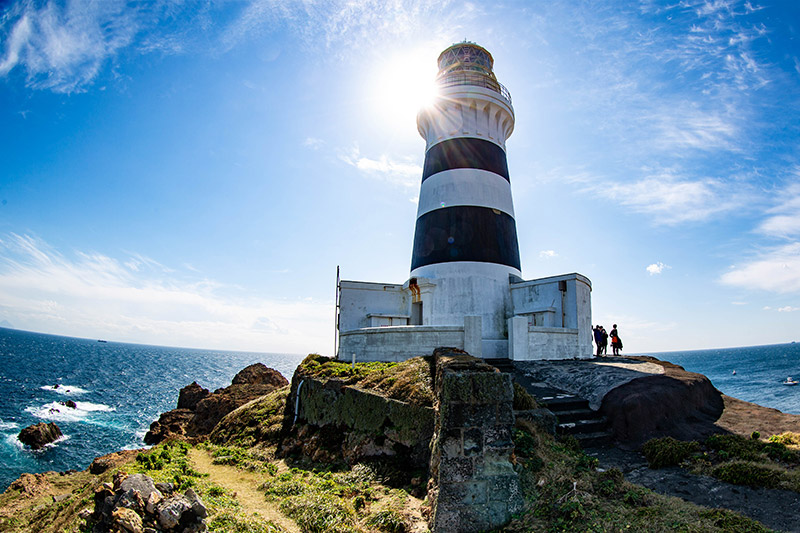
Mikomoto island is a small uninhabited island consisting only of reefs, about 10 km off the southeast coast of the Izu Peninsula, Japan.
The island is the point where ships from the west turn to head toward Tokyo Bay. The waters around the island are full of shoals and reefs, and the currents are fierce, so the island has long been known as an important and difficult navigational point.
The symbol of the island, Mikomotojima Lighthouse, is the oldest stone lighthouse still in service in Japan. It still plays an important role as a lighthouse that marks the entrance to Sagami Bay and Tokyo Bay.
The island is located on the border between Sagami Bay and Suruga Bay, and greatly influenced by the Kuroshio Current, one of the world's largest tidal currents. Therefore it is very tidal, and also known among fishermen and anglers as a good place for big game fishing.
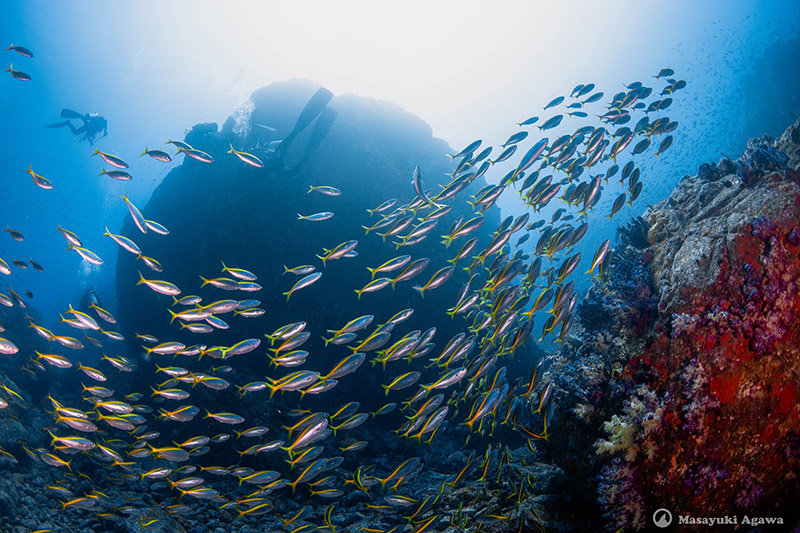
When the Kuroshio Current approaches Japan, transparency exceeds 30 meters, water temperature rises quickly, and the current is sometimes strong.
This strong current brings a wide variety of marine life to Mikomoto Island, and makes possible the exciting and dynamic drift diving that is said to be unique to Mikomoto diving.
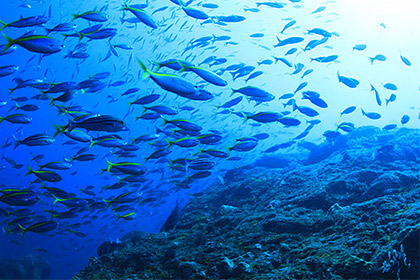
Mikomoto Island offers a unique diving experience unlike any other diving spot in the world. There is a huge chance to see numerous schools of fish, like the yellowtail, swimming around everywhere you look. And because of the strong Kuroshio Current, a rare opportunity to see sea creatures larger than one meter. It is still astonishing for us, seasoned divers, to see the sheer magnitude of sea creatures living in our tropical seas.
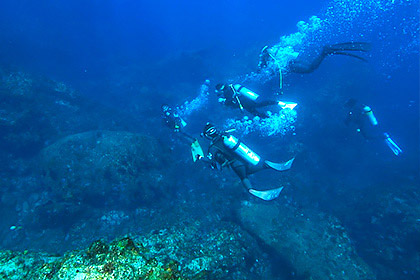
Because of the strong current near Mikomoto Island, divers can enjoy drift diving amongst gigantic rocks in a dynamic topography. Mikomoto Island offers an exclusive diving adventure unlike any other diving spot in the world.
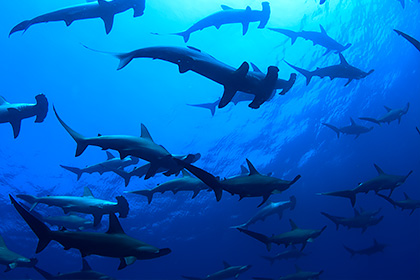
Even on a global scale, Mikomoto Island is one of the best places to observe sharks in their natural habitat. Large schools of hammerhead sharks, as well as various other kinds of sharks, are often seen every summer and autumn around Mikomoto Island.
The scalloped hammerhead (Sphyrna lewini) is a species of hammerhead shark in the family Sphyrnidae. The Greek word sphyrna translates into "hammer" in English, referring to the shape of this shark's head, which is its most distinguishing characteristic. The shark's eyes and nostrils are at the tips of the extensions. It is a fairly large hammerhead, but is still smaller than both the great and smooth hammerheads.
This shark is also known as the bronze, kinky-headed, or southern hammerhead. It primarily lives in warm, temperate, and tropical coastal waters all around the globe between latitudes 46°N and 36°S, down to a depth of 500 m (1,600 ft). It is the most common of all hammerheads.(from Wikipedia)
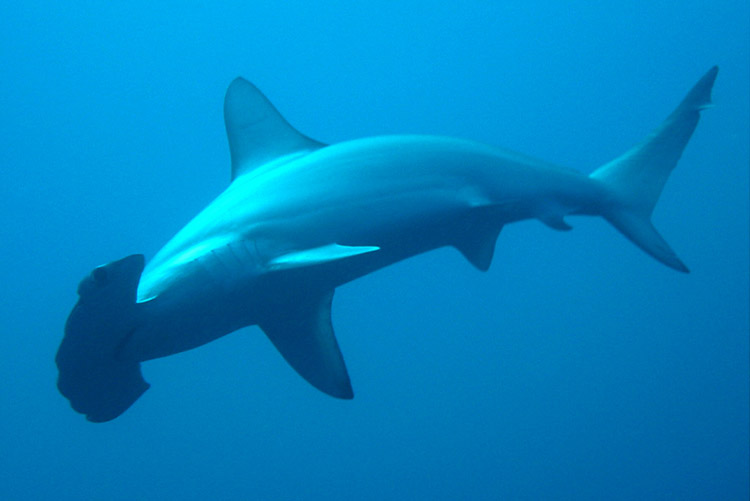
They are found in tropical to temperate coastal waters (surface to depths of 280 m, usually in nearshore waters and estuaries). They are found on continental shelves and in waters around islands, but may also swim out to the open ocean.
In Japan, large schools can be observed at Yonaguni Island and Mikomoto Island off Izu-Shimoda. Overseas, Coco Island in Costa Rica and Baja California in Mexico are also famous.
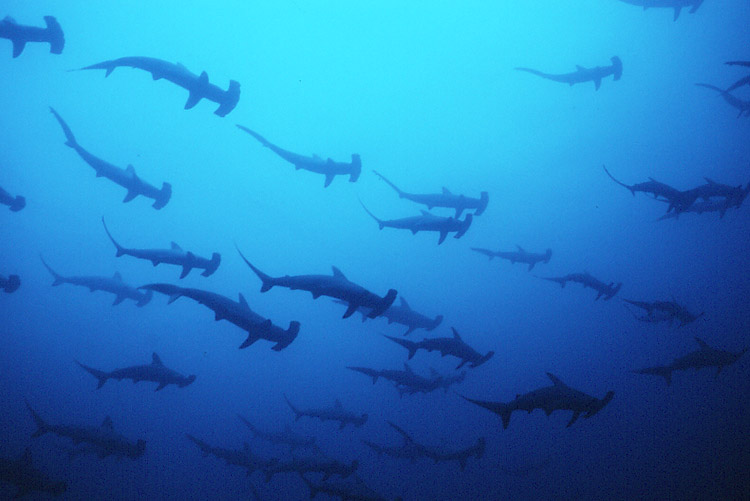
The scalloped hammerhead shark is the most popular of the world's eight species of hammerhead sharks (there are three species in Japan) and often forms large schools. They are generally regarded as "ferocious" and "dangerous," but in fact they are nervous and difficult to approach. They usually run away when they see divers, perhaps because they don't like the sound of breathing.
They prey on various species of fish, crustaceans, and cephalopods. They also prey on small sharks and rays. Stingrays have sharp, venomous stingers on their tails, but these do not seem to work on the sturgeon, which can be found in large numbers in its mouth and digestive tract. The distance between their eyes is said to allow them to accurately sense the distance to their prey.
Viviparous. The fetus grows in the uterus, using nutrients from the egg yolk. After a gestation period of 9 to 10 months, females give birth to 12 to 38 young. Newborns are around 40 cm in length. In Hawaii and other places, there are "nurseries" for these young in the shallows of islands where large sharks do not enter, and they remain there for a while to grow up.
In addition to this species, Smooth hammerhead sharks and Great hammerhead sharks are distributed in the seas around Japan, but this species has the largest population among them and is one of the most alarming shark species in the waters around Japan.
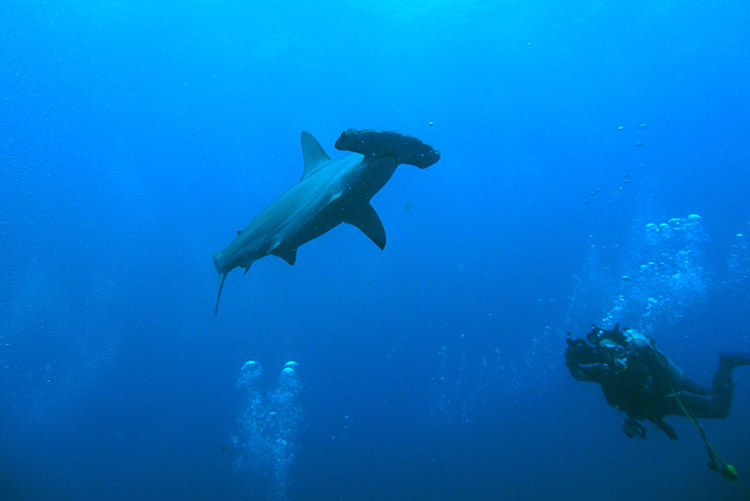
Although hammerhead sharks generally do not attack people as much as white sharks and great white sharks, and there have been few fatalities, they are a little more aggressive than other shark species in general. Therefore, we urge people to be vigilant and not to approach them. Although not an important fisheries species, its meat is used to make fish paste.
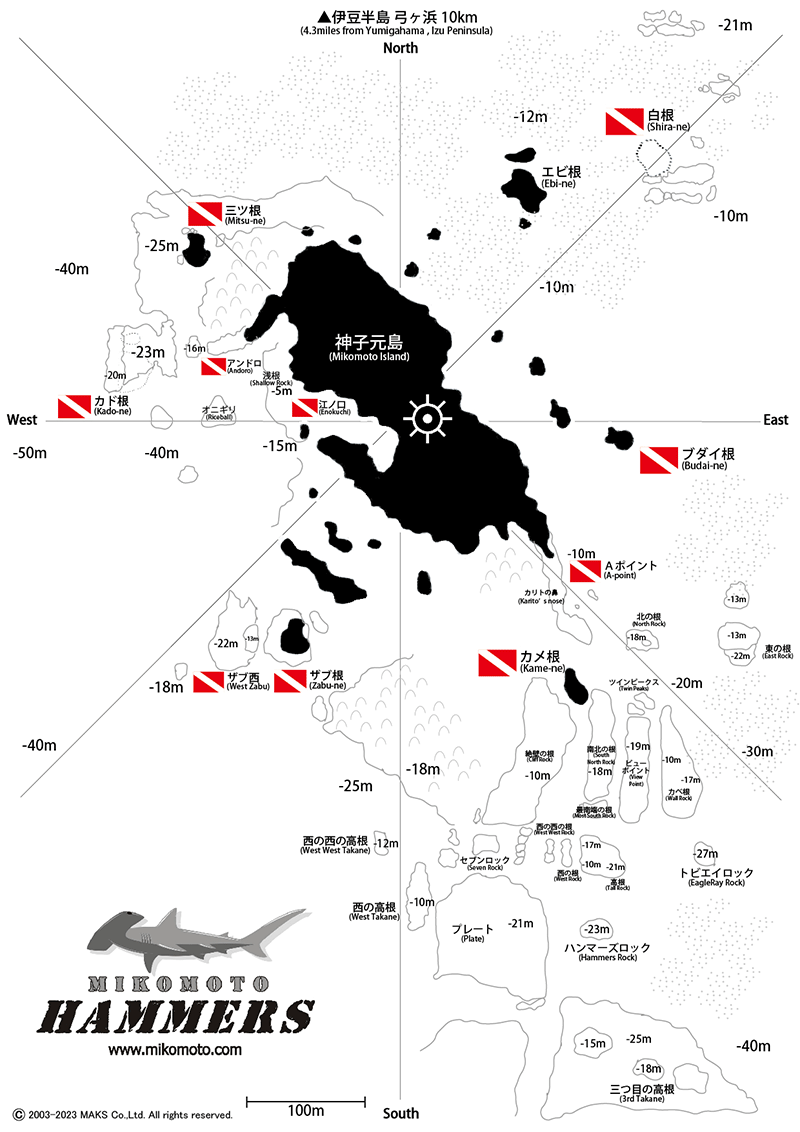
This big point boasts the largest encounter rate of big fish in Mikomoto. Many big fish, including hammerheads, appear in this Kame-ne area. The topography is also dynamic.
Hammerhead point limited to early summer. You can see them while landing on the roots, so even those who are not confident about swimming can see them safely.
The three rocks that face the surface of the water in close rows are one big rock in the water. Around the rocks come and go in overwhelming schools of yellowtails, and hawksbills. Offshore of Mitsu-ne is a large hidden rock called Kado-ne, which is also a good dive site for schools of migratory fish.
The depth is relatively shallow and calm. It is common to drift from Mitsu-ne to Shira-ne and back up. There are many migratory fish such as wrasses.
The name comes from the fact that the waves are always washing over the rocks. The rate of big game encounters is high here, too, and the terrain is complex and interesting.
A relatively calm point. The waters near the island are relatively shallow, but as soon as you go a little offshore, water depth become much deeper. You can see snappers, rockfish, and hawksbill wrasse all year round.